With Americans staying home more than usual, and doing lots of baking and cooking to pass the time, 2020 has been an exceptional year for butter https://trib.al/TSszFD4 ">https://trib.al/TSszFD4&q...
Land O’Lakes expects to sell 275 million to 300 million pounds of butter this year — a 20% increase http://trib.al/TSszFD4 ">https://trib.al/TSszFD4&q...
Butter’s been on its way back now for a while.
On a per-capita basis, Americans eat far less than they did in the first half of the 20th century, but way more than in the 80s and 90s http://trib.al/TSszFD4 ">https://trib.al/TSszFD4&q...
On a per-capita basis, Americans eat far less than they did in the first half of the 20th century, but way more than in the 80s and 90s http://trib.al/TSszFD4 ">https://trib.al/TSszFD4&q...
Butter lost out to margarine for a few decades thanks to:
 https://abs.twimg.com/emoji/v2/... draggable="false" alt="🧈" title="Butter" aria-label="Emoji: Butter">Loss of regulatory advantages
https://abs.twimg.com/emoji/v2/... draggable="false" alt="🧈" title="Butter" aria-label="Emoji: Butter">Loss of regulatory advantages
 https://abs.twimg.com/emoji/v2/... draggable="false" alt="💰" title="Geldsack" aria-label="Emoji: Geldsack">Cost
https://abs.twimg.com/emoji/v2/... draggable="false" alt="💰" title="Geldsack" aria-label="Emoji: Geldsack">Cost
 https://abs.twimg.com/emoji/v2/... draggable="false" alt="💓" title="Schlagendes Herz" aria-label="Emoji: Schlagendes Herz">Links to heart disease
https://abs.twimg.com/emoji/v2/... draggable="false" alt="💓" title="Schlagendes Herz" aria-label="Emoji: Schlagendes Herz">Links to heart disease
http://trib.al/TSszFD4 ">https://trib.al/TSszFD4&q...
http://trib.al/TSszFD4 ">https://trib.al/TSszFD4&q...
The health claims against butter were later mostly debunked, and it benefitted from the good-food revival that began in the 1960s — Julia Child wasn’t going to use margarine.
It also just, well, tastes better http://trib.al/TSszFD4 ">https://trib.al/TSszFD4&q...
It also just, well, tastes better http://trib.al/TSszFD4 ">https://trib.al/TSszFD4&q...
Butter is a survivor, as is the dairy industry in general. It’s faced many challenges recently:
 https://abs.twimg.com/emoji/v2/... draggable="false" alt="🐄" title="Kuh" aria-label="Emoji: Kuh">Giant dairies driving smaller farms out of business
https://abs.twimg.com/emoji/v2/... draggable="false" alt="🐄" title="Kuh" aria-label="Emoji: Kuh">Giant dairies driving smaller farms out of business
 https://abs.twimg.com/emoji/v2/... draggable="false" alt="🌱" title="Setzling" aria-label="Emoji: Setzling">Competition from almonds, oats and other plants
https://abs.twimg.com/emoji/v2/... draggable="false" alt="🌱" title="Setzling" aria-label="Emoji: Setzling">Competition from almonds, oats and other plants
 https://abs.twimg.com/emoji/v2/... draggable="false" alt="💸" title="Geld mit Flügeln" aria-label="Emoji: Geld mit Flügeln">Two big milk marketers have filed for bankruptcy http://trib.al/TSszFD4 ">https://trib.al/TSszFD4&q...
https://abs.twimg.com/emoji/v2/... draggable="false" alt="💸" title="Geld mit Flügeln" aria-label="Emoji: Geld mit Flügeln">Two big milk marketers have filed for bankruptcy http://trib.al/TSszFD4 ">https://trib.al/TSszFD4&q...
But while milk demand is declining, that’s more than offset by rising sales of everything that can be made out of milk http://trib.al/TSszFD4 ">https://trib.al/TSszFD4&q...
Even with milk sales there’s been an interesting shift:
 https://abs.twimg.com/emoji/v2/... draggable="false" alt="🥛" title="Glas Milch" aria-label="Emoji: Glas Milch">Whole milk outsold 2% milk for the first time in 15 years in 2018
https://abs.twimg.com/emoji/v2/... draggable="false" alt="🥛" title="Glas Milch" aria-label="Emoji: Glas Milch">Whole milk outsold 2% milk for the first time in 15 years in 2018
 https://abs.twimg.com/emoji/v2/... draggable="false" alt="🥛" title="Glas Milch" aria-label="Emoji: Glas Milch">Skim milk sales drifting downwards
https://abs.twimg.com/emoji/v2/... draggable="false" alt="🥛" title="Glas Milch" aria-label="Emoji: Glas Milch">Skim milk sales drifting downwards
That’s good for farmers — whole milk is the most profitable http://trib.al/TSszFD4 ">https://trib.al/TSszFD4&q...
That’s good for farmers — whole milk is the most profitable http://trib.al/TSszFD4 ">https://trib.al/TSszFD4&q...
Sales of butter and yoghurt have kept the dairy industry going.
But the main driver of the industry’s resilience is cheese. Americans consume almost three times as much of it per-person as they did in 1970 http://trib.al/TSszFD4 ">https://trib.al/TSszFD4&q...
But the main driver of the industry’s resilience is cheese. Americans consume almost three times as much of it per-person as they did in 1970 http://trib.al/TSszFD4 ">https://trib.al/TSszFD4&q...
We can see fun food trends emerge in the data:
 https://abs.twimg.com/emoji/v2/... draggable="false" alt="🍕" title="Pizzastück" aria-label="Emoji: Pizzastück">Rise of Italian cheese thanks to our love of pizza
https://abs.twimg.com/emoji/v2/... draggable="false" alt="🍕" title="Pizzastück" aria-label="Emoji: Pizzastück">Rise of Italian cheese thanks to our love of pizza
 https://abs.twimg.com/emoji/v2/... draggable="false" alt="🥯" title="Bagel" aria-label="Emoji: Bagel">Bagels’ emergence from regional-food status (cream cheese)
https://abs.twimg.com/emoji/v2/... draggable="false" alt="🥯" title="Bagel" aria-label="Emoji: Bagel">Bagels’ emergence from regional-food status (cream cheese)
 https://abs.twimg.com/emoji/v2/... draggable="false" alt="🌮" title="Taco" aria-label="Emoji: Taco">The rising popularity of Mexican food http://trib.al/TSszFD4 ">https://trib.al/TSszFD4&q...
https://abs.twimg.com/emoji/v2/... draggable="false" alt="🌮" title="Taco" aria-label="Emoji: Taco">The rising popularity of Mexican food http://trib.al/TSszFD4 ">https://trib.al/TSszFD4&q...
But as cheese can be stored for longer, it’s also something that’s made when dairies have more milk than they know what to do with, resulting in the infamous “cheese mountain” that is occasionally reduced in size by big government purchases http://trib.al/TSszFD4 ">https://trib.al/TSszFD4&q...
Those have been especially big this year, with the Agriculture Department so far delivering more than 118 million food boxes — each containing several pounds of dairy products, mainly cheese — to food banks and other charities as part of relief efforts http://trib.al/TSszFD4 ">https://trib.al/TSszFD4&q...
The U.S. has also found new things to sell, and new places to sell them. It now exports a fair amount of cheese, and plenty of cheese-making byproducts (think whey powder), mainly to:
 https://abs.twimg.com/emoji/v2/... draggable="false" alt="🇲🇽" title="Flagge von Mexiko" aria-label="Emoji: Flagge von Mexiko">Mexico
https://abs.twimg.com/emoji/v2/... draggable="false" alt="🇲🇽" title="Flagge von Mexiko" aria-label="Emoji: Flagge von Mexiko">Mexico
 https://abs.twimg.com/emoji/v2/... draggable="false" alt="🇯🇵" title="Flagge von Japan" aria-label="Emoji: Flagge von Japan">Japan
https://abs.twimg.com/emoji/v2/... draggable="false" alt="🇯🇵" title="Flagge von Japan" aria-label="Emoji: Flagge von Japan">Japan
 https://abs.twimg.com/emoji/v2/... draggable="false" alt="🇰🇷" title="Flagge von Südkorea" aria-label="Emoji: Flagge von Südkorea">South Korea
https://abs.twimg.com/emoji/v2/... draggable="false" alt="🇰🇷" title="Flagge von Südkorea" aria-label="Emoji: Flagge von Südkorea">South Korea
http://trib.al/TSszFD4 ">https://trib.al/TSszFD4&q...
http://trib.al/TSszFD4 ">https://trib.al/TSszFD4&q...
So, now we’ve established that the dairy industry is going strong, how do you like your butter? http://trib.al/TSszFD4 ">https://trib.al/TSszFD4&q...

 Read on Twitter
Read on Twitter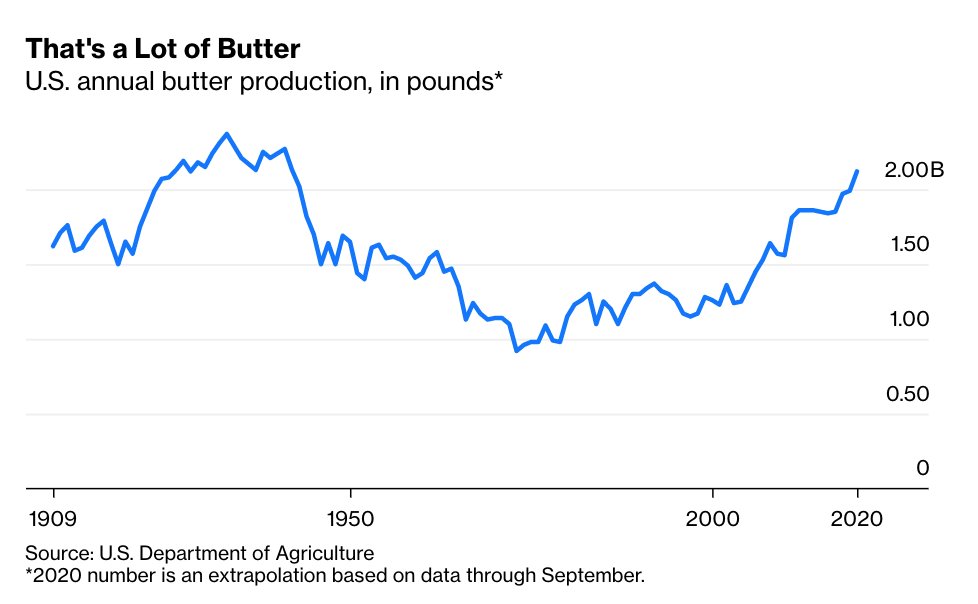 https://abs.twimg.com/emoji/v2/... draggable="false" alt="📈" title="Tabelle mit Aufwärtstrend" aria-label="Emoji: Tabelle mit Aufwärtstrend">Butter production is up 6% over the first nine months of the year, and could top two billion pounds for the first time since 1943.Land O’Lakes expects to sell 275 million to 300 million pounds of butter this year — a 20% increase https://trib.al/TSszFD4&q..." title="https://abs.twimg.com/emoji/v2/... draggable="false" alt="🧈" title="Butter" aria-label="Emoji: Butter">https://abs.twimg.com/emoji/v2/... draggable="false" alt="📈" title="Tabelle mit Aufwärtstrend" aria-label="Emoji: Tabelle mit Aufwärtstrend">Butter production is up 6% over the first nine months of the year, and could top two billion pounds for the first time since 1943.Land O’Lakes expects to sell 275 million to 300 million pounds of butter this year — a 20% increase https://trib.al/TSszFD4&q..." class="img-responsive" style="max-width:100%;"/>
https://abs.twimg.com/emoji/v2/... draggable="false" alt="📈" title="Tabelle mit Aufwärtstrend" aria-label="Emoji: Tabelle mit Aufwärtstrend">Butter production is up 6% over the first nine months of the year, and could top two billion pounds for the first time since 1943.Land O’Lakes expects to sell 275 million to 300 million pounds of butter this year — a 20% increase https://trib.al/TSszFD4&q..." title="https://abs.twimg.com/emoji/v2/... draggable="false" alt="🧈" title="Butter" aria-label="Emoji: Butter">https://abs.twimg.com/emoji/v2/... draggable="false" alt="📈" title="Tabelle mit Aufwärtstrend" aria-label="Emoji: Tabelle mit Aufwärtstrend">Butter production is up 6% over the first nine months of the year, and could top two billion pounds for the first time since 1943.Land O’Lakes expects to sell 275 million to 300 million pounds of butter this year — a 20% increase https://trib.al/TSszFD4&q..." class="img-responsive" style="max-width:100%;"/>
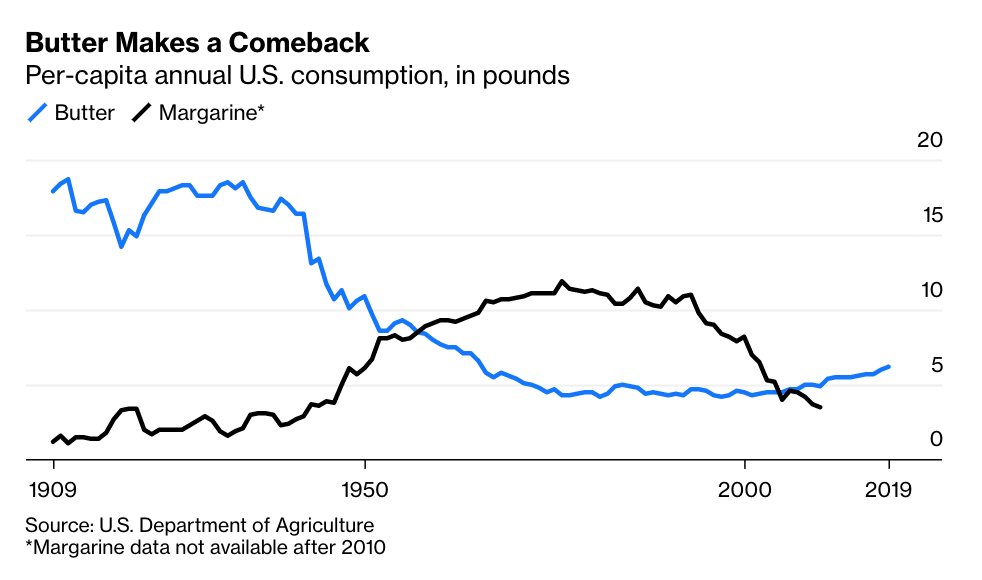
 Loss of regulatory advantageshttps://abs.twimg.com/emoji/v2/... draggable="false" alt="💰" title="Geldsack" aria-label="Emoji: Geldsack">Costhttps://abs.twimg.com/emoji/v2/... draggable="false" alt="💓" title="Schlagendes Herz" aria-label="Emoji: Schlagendes Herz">Links to heart disease https://trib.al/TSszFD4&q..." title="Butter lost out to margarine for a few decades thanks to:https://abs.twimg.com/emoji/v2/... draggable="false" alt="🧈" title="Butter" aria-label="Emoji: Butter">Loss of regulatory advantageshttps://abs.twimg.com/emoji/v2/... draggable="false" alt="💰" title="Geldsack" aria-label="Emoji: Geldsack">Costhttps://abs.twimg.com/emoji/v2/... draggable="false" alt="💓" title="Schlagendes Herz" aria-label="Emoji: Schlagendes Herz">Links to heart disease https://trib.al/TSszFD4&q..." class="img-responsive" style="max-width:100%;"/>
Loss of regulatory advantageshttps://abs.twimg.com/emoji/v2/... draggable="false" alt="💰" title="Geldsack" aria-label="Emoji: Geldsack">Costhttps://abs.twimg.com/emoji/v2/... draggable="false" alt="💓" title="Schlagendes Herz" aria-label="Emoji: Schlagendes Herz">Links to heart disease https://trib.al/TSszFD4&q..." title="Butter lost out to margarine for a few decades thanks to:https://abs.twimg.com/emoji/v2/... draggable="false" alt="🧈" title="Butter" aria-label="Emoji: Butter">Loss of regulatory advantageshttps://abs.twimg.com/emoji/v2/... draggable="false" alt="💰" title="Geldsack" aria-label="Emoji: Geldsack">Costhttps://abs.twimg.com/emoji/v2/... draggable="false" alt="💓" title="Schlagendes Herz" aria-label="Emoji: Schlagendes Herz">Links to heart disease https://trib.al/TSszFD4&q..." class="img-responsive" style="max-width:100%;"/>

 Giant dairies driving smaller farms out of businesshttps://abs.twimg.com/emoji/v2/... draggable="false" alt="🌱" title="Setzling" aria-label="Emoji: Setzling">Competition from almonds, oats and other plantshttps://abs.twimg.com/emoji/v2/... draggable="false" alt="💸" title="Geld mit Flügeln" aria-label="Emoji: Geld mit Flügeln">Two big milk marketers have filed for bankruptcy https://trib.al/TSszFD4&q..." title="Butter is a survivor, as is the dairy industry in general. It’s faced many challenges recently:https://abs.twimg.com/emoji/v2/... draggable="false" alt="🐄" title="Kuh" aria-label="Emoji: Kuh">Giant dairies driving smaller farms out of businesshttps://abs.twimg.com/emoji/v2/... draggable="false" alt="🌱" title="Setzling" aria-label="Emoji: Setzling">Competition from almonds, oats and other plantshttps://abs.twimg.com/emoji/v2/... draggable="false" alt="💸" title="Geld mit Flügeln" aria-label="Emoji: Geld mit Flügeln">Two big milk marketers have filed for bankruptcy https://trib.al/TSszFD4&q..." class="img-responsive" style="max-width:100%;"/>
Giant dairies driving smaller farms out of businesshttps://abs.twimg.com/emoji/v2/... draggable="false" alt="🌱" title="Setzling" aria-label="Emoji: Setzling">Competition from almonds, oats and other plantshttps://abs.twimg.com/emoji/v2/... draggable="false" alt="💸" title="Geld mit Flügeln" aria-label="Emoji: Geld mit Flügeln">Two big milk marketers have filed for bankruptcy https://trib.al/TSszFD4&q..." title="Butter is a survivor, as is the dairy industry in general. It’s faced many challenges recently:https://abs.twimg.com/emoji/v2/... draggable="false" alt="🐄" title="Kuh" aria-label="Emoji: Kuh">Giant dairies driving smaller farms out of businesshttps://abs.twimg.com/emoji/v2/... draggable="false" alt="🌱" title="Setzling" aria-label="Emoji: Setzling">Competition from almonds, oats and other plantshttps://abs.twimg.com/emoji/v2/... draggable="false" alt="💸" title="Geld mit Flügeln" aria-label="Emoji: Geld mit Flügeln">Two big milk marketers have filed for bankruptcy https://trib.al/TSszFD4&q..." class="img-responsive" style="max-width:100%;"/>

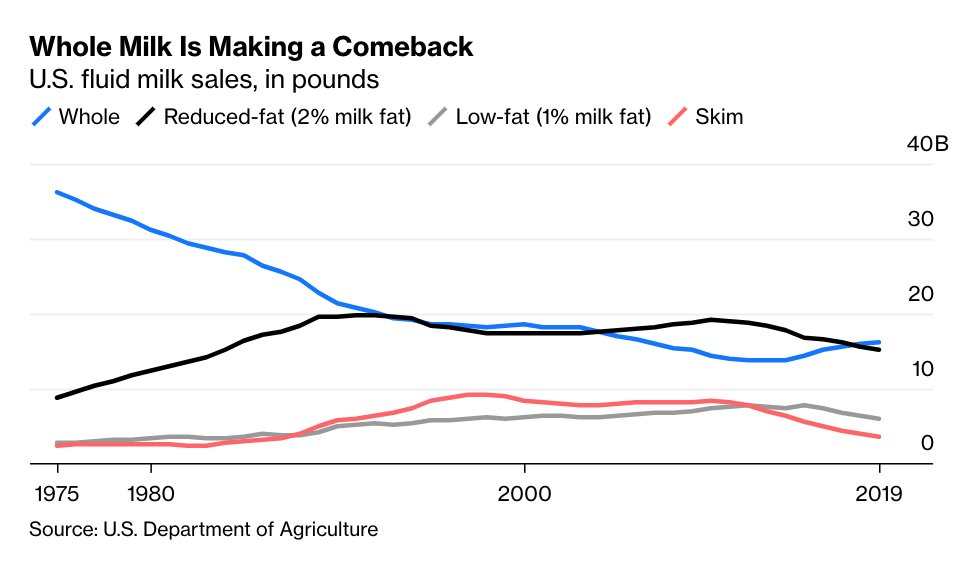 Whole milk outsold 2% milk for the first time in 15 years in 2018https://abs.twimg.com/emoji/v2/... draggable="false" alt="🥛" title="Glas Milch" aria-label="Emoji: Glas Milch">Skim milk sales drifting downwardsThat’s good for farmers — whole milk is the most profitable https://trib.al/TSszFD4&q..." title="Even with milk sales there’s been an interesting shift:https://abs.twimg.com/emoji/v2/... draggable="false" alt="🥛" title="Glas Milch" aria-label="Emoji: Glas Milch">Whole milk outsold 2% milk for the first time in 15 years in 2018https://abs.twimg.com/emoji/v2/... draggable="false" alt="🥛" title="Glas Milch" aria-label="Emoji: Glas Milch">Skim milk sales drifting downwardsThat’s good for farmers — whole milk is the most profitable https://trib.al/TSszFD4&q..." class="img-responsive" style="max-width:100%;"/>
Whole milk outsold 2% milk for the first time in 15 years in 2018https://abs.twimg.com/emoji/v2/... draggable="false" alt="🥛" title="Glas Milch" aria-label="Emoji: Glas Milch">Skim milk sales drifting downwardsThat’s good for farmers — whole milk is the most profitable https://trib.al/TSszFD4&q..." title="Even with milk sales there’s been an interesting shift:https://abs.twimg.com/emoji/v2/... draggable="false" alt="🥛" title="Glas Milch" aria-label="Emoji: Glas Milch">Whole milk outsold 2% milk for the first time in 15 years in 2018https://abs.twimg.com/emoji/v2/... draggable="false" alt="🥛" title="Glas Milch" aria-label="Emoji: Glas Milch">Skim milk sales drifting downwardsThat’s good for farmers — whole milk is the most profitable https://trib.al/TSszFD4&q..." class="img-responsive" style="max-width:100%;"/>
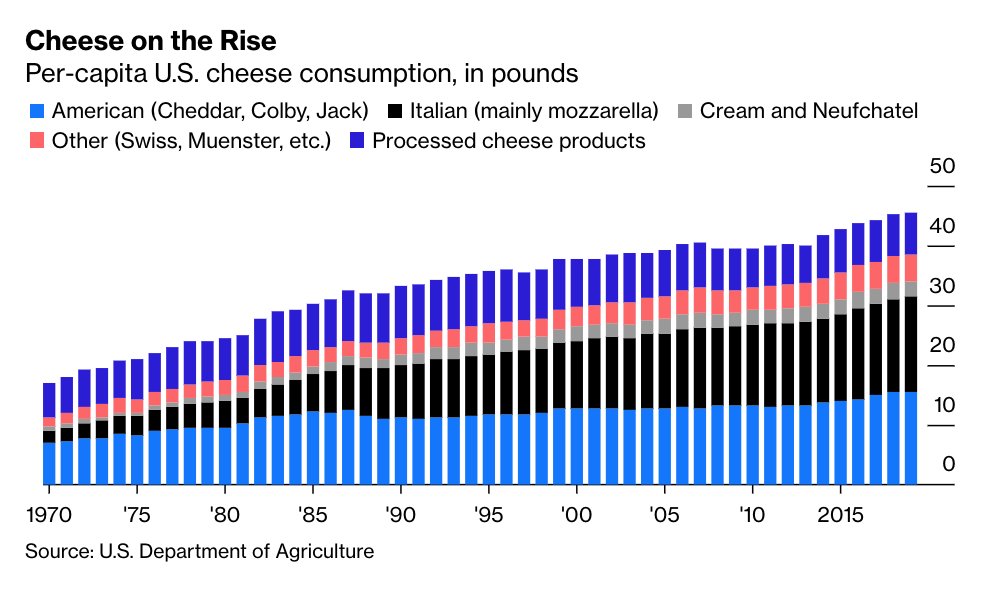
 Rise of Italian cheese thanks to our love of pizzahttps://abs.twimg.com/emoji/v2/... draggable="false" alt="🥯" title="Bagel" aria-label="Emoji: Bagel">Bagels’ emergence from regional-food status (cream cheese)https://abs.twimg.com/emoji/v2/... draggable="false" alt="🌮" title="Taco" aria-label="Emoji: Taco">The rising popularity of Mexican food https://trib.al/TSszFD4&q..." title="We can see fun food trends emerge in the data:https://abs.twimg.com/emoji/v2/... draggable="false" alt="🍕" title="Pizzastück" aria-label="Emoji: Pizzastück">Rise of Italian cheese thanks to our love of pizzahttps://abs.twimg.com/emoji/v2/... draggable="false" alt="🥯" title="Bagel" aria-label="Emoji: Bagel">Bagels’ emergence from regional-food status (cream cheese)https://abs.twimg.com/emoji/v2/... draggable="false" alt="🌮" title="Taco" aria-label="Emoji: Taco">The rising popularity of Mexican food https://trib.al/TSszFD4&q..." class="img-responsive" style="max-width:100%;"/>
Rise of Italian cheese thanks to our love of pizzahttps://abs.twimg.com/emoji/v2/... draggable="false" alt="🥯" title="Bagel" aria-label="Emoji: Bagel">Bagels’ emergence from regional-food status (cream cheese)https://abs.twimg.com/emoji/v2/... draggable="false" alt="🌮" title="Taco" aria-label="Emoji: Taco">The rising popularity of Mexican food https://trib.al/TSszFD4&q..." title="We can see fun food trends emerge in the data:https://abs.twimg.com/emoji/v2/... draggable="false" alt="🍕" title="Pizzastück" aria-label="Emoji: Pizzastück">Rise of Italian cheese thanks to our love of pizzahttps://abs.twimg.com/emoji/v2/... draggable="false" alt="🥯" title="Bagel" aria-label="Emoji: Bagel">Bagels’ emergence from regional-food status (cream cheese)https://abs.twimg.com/emoji/v2/... draggable="false" alt="🌮" title="Taco" aria-label="Emoji: Taco">The rising popularity of Mexican food https://trib.al/TSszFD4&q..." class="img-responsive" style="max-width:100%;"/>
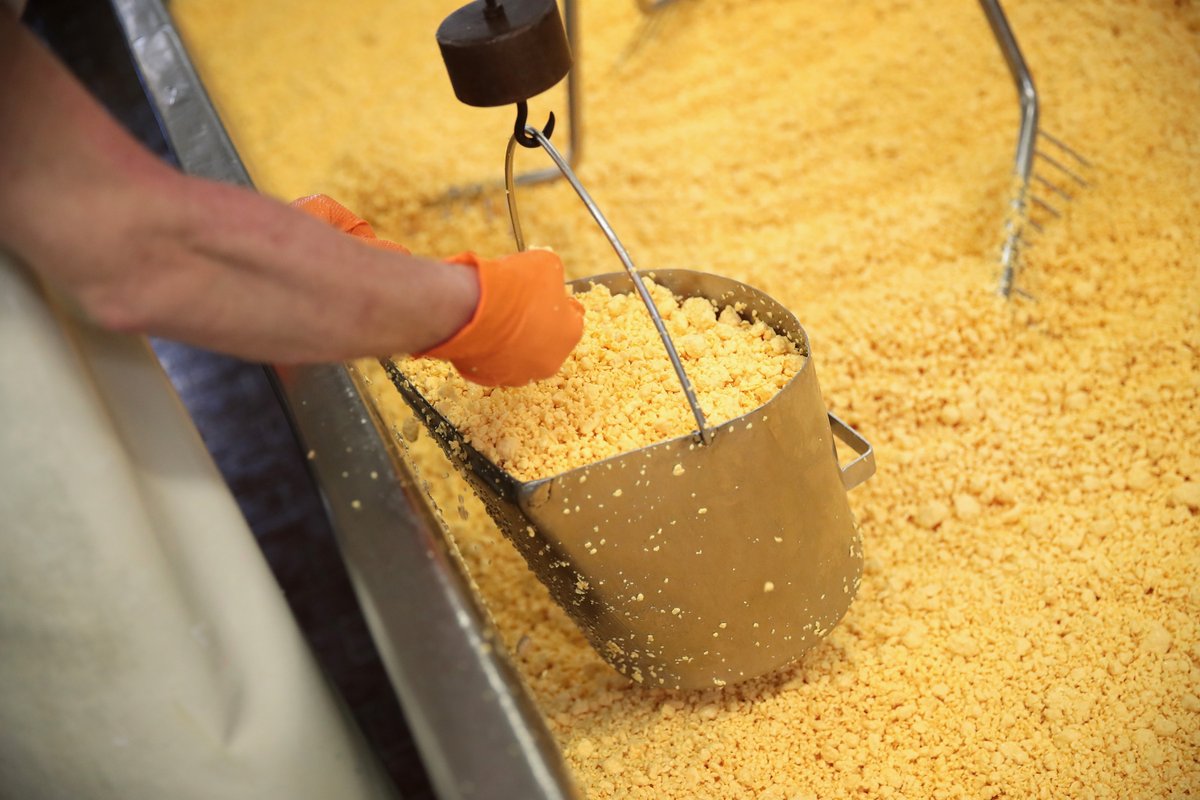

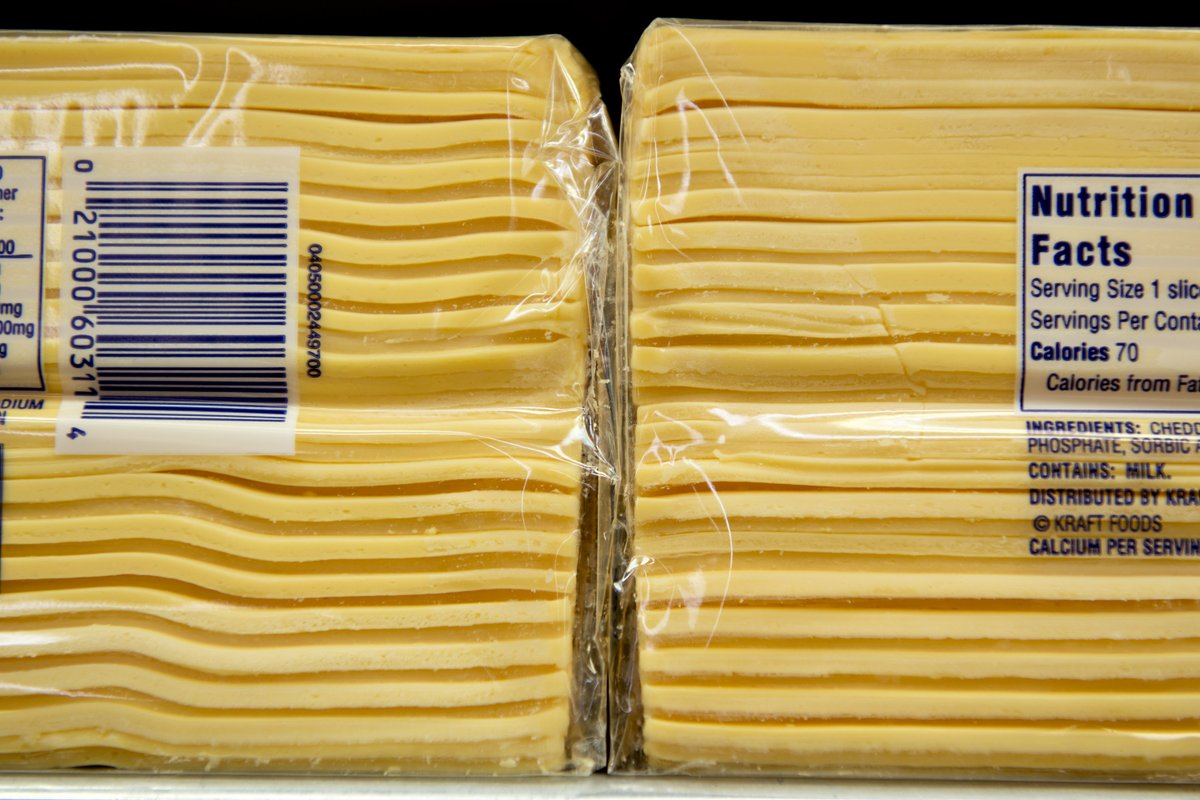 Mexicohttps://abs.twimg.com/emoji/v2/... draggable="false" alt="🇯🇵" title="Flagge von Japan" aria-label="Emoji: Flagge von Japan">Japanhttps://abs.twimg.com/emoji/v2/... draggable="false" alt="🇰🇷" title="Flagge von Südkorea" aria-label="Emoji: Flagge von Südkorea">South Korea https://trib.al/TSszFD4&q..." title="The U.S. has also found new things to sell, and new places to sell them. It now exports a fair amount of cheese, and plenty of cheese-making byproducts (think whey powder), mainly to:https://abs.twimg.com/emoji/v2/... draggable="false" alt="🇲🇽" title="Flagge von Mexiko" aria-label="Emoji: Flagge von Mexiko">Mexicohttps://abs.twimg.com/emoji/v2/... draggable="false" alt="🇯🇵" title="Flagge von Japan" aria-label="Emoji: Flagge von Japan">Japanhttps://abs.twimg.com/emoji/v2/... draggable="false" alt="🇰🇷" title="Flagge von Südkorea" aria-label="Emoji: Flagge von Südkorea">South Korea https://trib.al/TSszFD4&q..." class="img-responsive" style="max-width:100%;"/>
Mexicohttps://abs.twimg.com/emoji/v2/... draggable="false" alt="🇯🇵" title="Flagge von Japan" aria-label="Emoji: Flagge von Japan">Japanhttps://abs.twimg.com/emoji/v2/... draggable="false" alt="🇰🇷" title="Flagge von Südkorea" aria-label="Emoji: Flagge von Südkorea">South Korea https://trib.al/TSszFD4&q..." title="The U.S. has also found new things to sell, and new places to sell them. It now exports a fair amount of cheese, and plenty of cheese-making byproducts (think whey powder), mainly to:https://abs.twimg.com/emoji/v2/... draggable="false" alt="🇲🇽" title="Flagge von Mexiko" aria-label="Emoji: Flagge von Mexiko">Mexicohttps://abs.twimg.com/emoji/v2/... draggable="false" alt="🇯🇵" title="Flagge von Japan" aria-label="Emoji: Flagge von Japan">Japanhttps://abs.twimg.com/emoji/v2/... draggable="false" alt="🇰🇷" title="Flagge von Südkorea" aria-label="Emoji: Flagge von Südkorea">South Korea https://trib.al/TSszFD4&q..." class="img-responsive" style="max-width:100%;"/>


